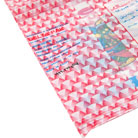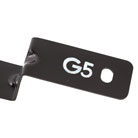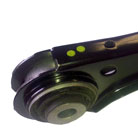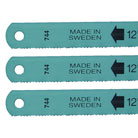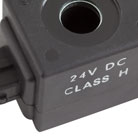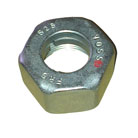Solid Hot Inks
How do Solid Hot Inks work?
Solid Hot Inks (or wax inks) are used in mechanical stamping machines. The hot ink consists of wax and pigments and is impregnated into a foam roller. This “wax roller” is solid when placed in the printer. Once in the printer the wax is heated and liquefied. There is a mechanical arm located in the printer on which a rubber template with text, a logo or a symbol can be placed. In one single movement this arm firstly presses the cliché against the wax roller, and then onto the printing surface (substrate) which stamps the print.
Intermittent and continuous coding on any surface
Solid Hot Inks can be used extensively. Because this form of stamping happens in a split second, printing can be done on both static (intermittent) as well as moving products (continuous). The wax cools down and solidifies directly after stamping which makes printing on both porous and non-porous surfaces possible. This will also prevent the ink from migrating and the print will adhere well to virtually any material.
Applications for Solid Hot Inks
Their reliability, compact installation dimensions, universal ink–adhesion and low cost make Solid Hot Inks especially suitable for use in applications for which coding does not often change. Solid Hot Inks can therefore be frequently found in the primary production phase of industrial production settings such as the automotive and electronic industries for instance. In these settings, parts under production are marked by an image, batch number or logo for traceability, or after a quality checking or for sorting purposes.
Automotive and Solid Hot Inks
DOT marking as a proof of quality is a process widely used in the automotive industry. Despite extensive robotization and high-tech coded parts Kortho’s proven and budget priced Hot Quickcoder is still perfect and widely used for marking colorfull dots on a product for visual check-ups.Kortho counts the largest companies and suppliers in the Automotive industry worldwide as its Hot Quickcoder users. A big achievement for a basic but most of all proven and reliable coding device in a hightech market.Overall, dot marking is an important tool in the automotive industry for indentifying and tracking parts, ensuring the quality and traceability of products, and complying with regulatory requirements.
